Sama chawal, which is not actually rice but a seed, is a very popular ingredient in India. It is used in the recipes of many dishes that are consumed during the religious fasting season. Just like this Sama Chawal Idli or Vrat Ki Idli – a unique variation to the South Indian Idli. These are made without the regular rice, but with sama. Thus, a perfect choice of dish for your vrats or fasts and even on regular days. A vegan, gluten free and quite a nutritious recipe.
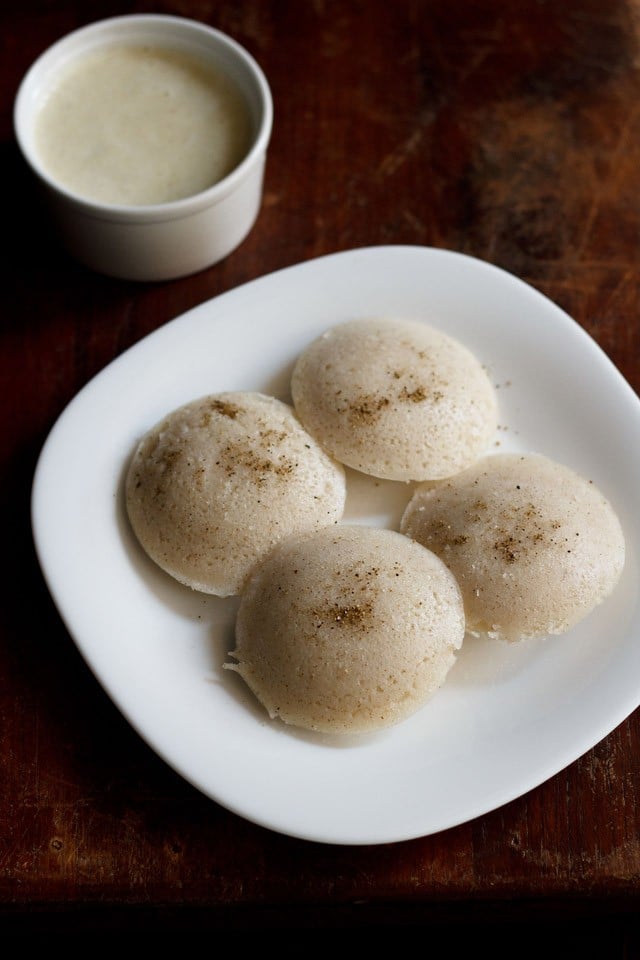
What is Sama
Although you may come across this ingredient as sama chawal or sama rice in a lot of recipes, this is definitely not rice but is a healthy seed.
Known as Barnyard Millet or Japanese Millet in English and vari, samo, sanwa, varai, swang or samwa in other regional Indian languages, these tiny round grains are brimming with health benefits. Also, a naturally fibre-rich, gluten free and vegan option.
This grain is grown in various regions of India, China, Japan and Korea, where it is suitable for both human consumption and as fodder for animals. The origin is believed to be as old as 2000 BC during the Jomon period in Japan.
Given its composition, it is best suited for making dishes that are apt during the vrat or fasting season in India. Like this Sama Chawal Idli, there are many other delicious dishes that can be prepared using sama.
Apart from being an excellent source of fibre, sama is also rich in proteins, low in calories and is ideal for diabetics.
About Sama Chawal Idli
This Vrat ki Idli is a fermented idli recipe with sama/vari rice or barnyard millet, which is a popular grain used during fasting in India.
I have made these idlis many a times during my Navratri fasts as well, where I accompany them with a no onion, no garlic coconut chutney. This meal is tasty and filling too.
Apart from the samo or sama chawal, I have also added sabudana or sago/tapioca pearls in this Sama Chawal Idli recipe. Thus, these are not your usual idlis.
So, you can’t really expect these to be soft and fluffy like the regular idlis. Not hard as well, just can’t be compared to the softness of the idlis made with rice and urad dal. If you want to include millets in your diet then you can also check this recipe of Millet Idli made with foxtail millet.
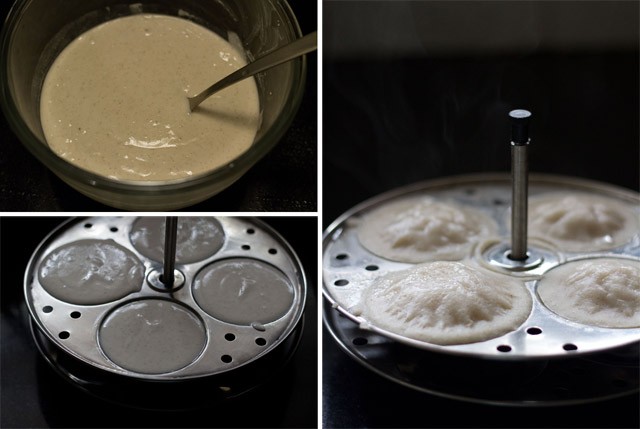
On my fasting days, I prefer to have something which is filling, yet light, healthy and energy giving. The Sama Chawal Idli is one of the best options then.
The batter is kept overnight for fermentation. This imparts a pleasant aroma in it, the next day. For leavening, I add baking soda which makes the idli rise while steaming.
Variations
There’s a variation that can be done to this Vari Rice Idli recipe by adding 1 to 2 tablespoons curd (yogurt), then adding the baking soda before making the idli.
You can also make khatta dhokla with the same batter. To make dhokla, you’ll have to add ½ cup thick sour curd in the ground batter, stir well and allow to ferment overnight.
Before preparing, add 1 teaspoon fruit salt (Eno) and keep the batter for steaming. You’ll have lovely dhokla with this.
Since I don’t like the soapy aroma of baking soda in the Sama Chawal Idli, I always add less; that is, just about 2 pinches in the batter. If you are ok with it, you can even add ¼ to ½ teaspoon of baking soda.
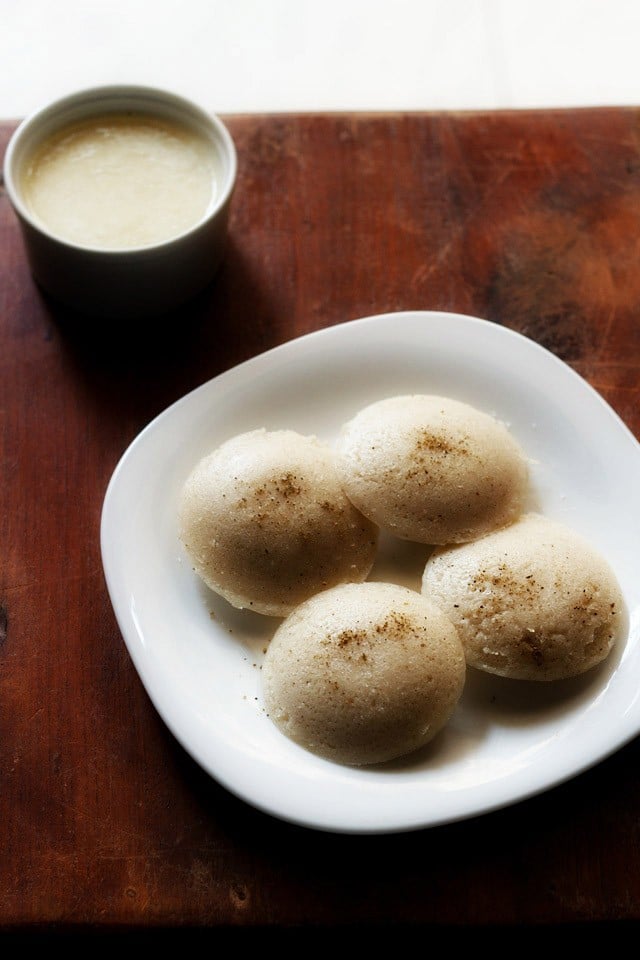
In addition to this special idli, you can make a variety of other dishes with sama – Samvat Rice Khichdi and even Samak Rice Pulao. Also, if you are planning to keep fasts this time during Navratri, you can refer to this helpful compilation of Navratri Fasting Rules, Recipes & Pooja Vidhi.
FAQs
Less water in the batter can be one of the reasons. The batter should have a medium consistency or slightly thick like an idli batter, but not very thick.
Make sure to soak the sabudana too well and they should soften and get mashed easily when you press them with your fingers. You can also increase the quantity of baking soda a bit for softer and fluffier idlis.
You can make these idlis without the baking soda too. However, in that case, idlis will be slightly dense but still taste good. If you can use fruit salt (Eno), it is also a substitute.
Yes, certainly you can do that.
More Fasting Recipes To Try!
Navratri & Fasting Recipes
Navratri & Fasting Recipes
Navratri & Fasting Recipes
Navratri & Fasting Recipes
Please be sure to rate the recipe in the recipe card or leave a comment below if you have made it. For more vegetarian inspirations, Sign Up for my emails or follow me on Instagram, Youtube, Facebook, Pinterest or Twitter.
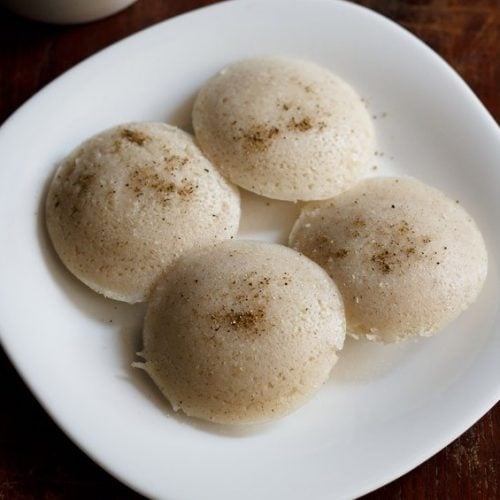
Sama Chawal Idli | Vrat Ki Idli | Vari Rice Idli
Ingredients
- 1 cup sama ke chawal (barnyard millet)
- ½ cup sabudana (tapioca pearls)
- 2 pinches baking soda
- rock salt (edible and food grade) as required
- water – as required, for soaking
Instructions
Soaking Barnyard Millet & Sago
- Take both the sama ke chawal and sabudana in a bowl.
- Rinse then well and soak in enough water for 3 hours.
- Press a few sabudana pearls and they should get mashed easily. If the center feels hard, they need to be soaked for more time. So add water if required and soak for a few more hours, until the sabudana has softened well.
Making Batter
- Drain all the water very well. Then grind the sama chawal and sabudana in a wet grinder or mixer-grinder.
- No need to add any water as the sago grains absorb enough water to help with the grinding. But if you are unable to grind in your grinder then just add 2 to 3 teaspoons of water.
- The consistency of the batter can be a bit granular or slightly coarse.
- Take the batter in a bowl and allow to ferment for 8 to 9 hours or overnight,
- Before preparing, add salt to the batter and mix well.
Steaming
- Heat water in a steamer or an electric cooker. Add water as needed in the steamer or electric cooker or instant pot.
- Add the baking soda to the batter and stir well.
- Pour the batter in greased idli moulds.
- Place in the steamer or electric cooker.
- Steam the idli for 8 to 10 minutes or until they are cooked well.
- Serve sama ke idli hot or warm with your favorite coconut chutney
Notes
- Make sure that the sabudana (sago) is soaked well. Depending on the quality the sago may take more time to soak and soften. After a three hour soaking period, if the sabudana still feels hard, when you press it, soak for a further a couple of hours adding more water if needed; until the sago has softened really well.
- Do not make a very thick batter. The batter can be similar to that of the idli batter consistency.
- If you prefer, you can increase the amount of baking soda by ¼ to ½ teaspoon.
Nutrition Info (Approximate Values)
This Sama Chawal Idli Recipe from the archives was first published on February 2013. It has been updated and republished on March 2024.
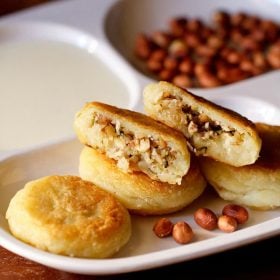
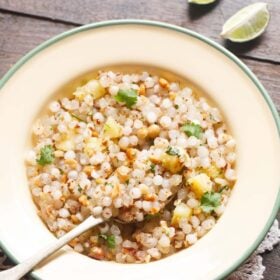
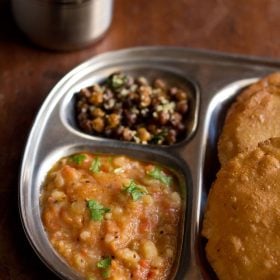
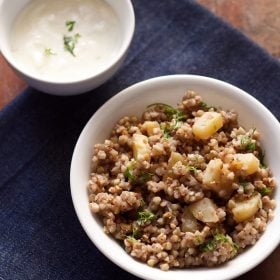

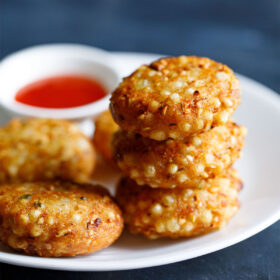
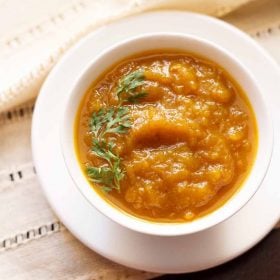








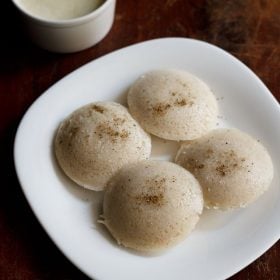
Replacement of tapioca pearls.
I am diabetic, i prefer no potatoes, no yams, and no tapioca.
Add ½ cup urad dal (hulled black gram). If you prefer less urad dal flavor, add ¼ to ⅓ cup.